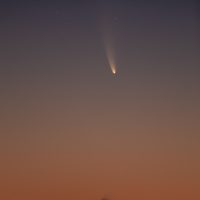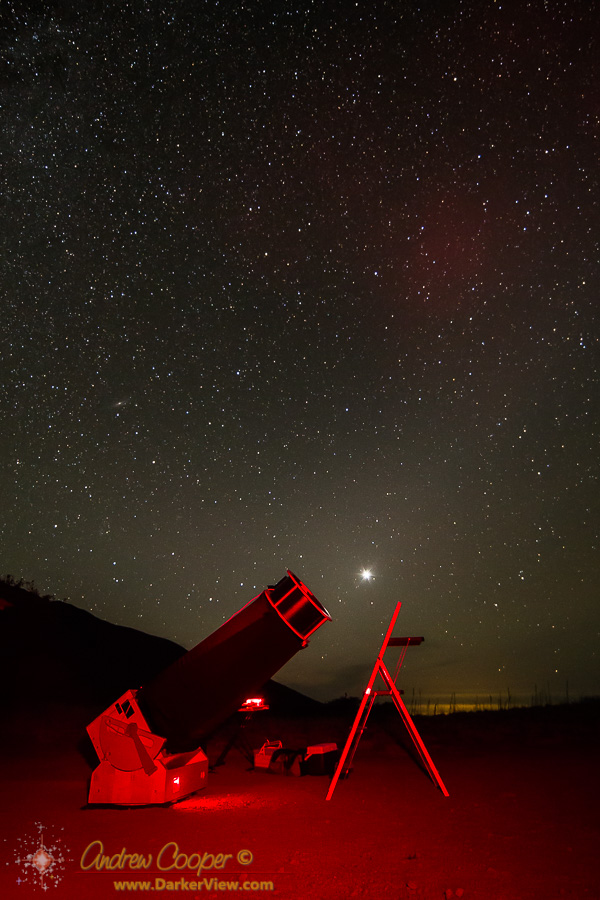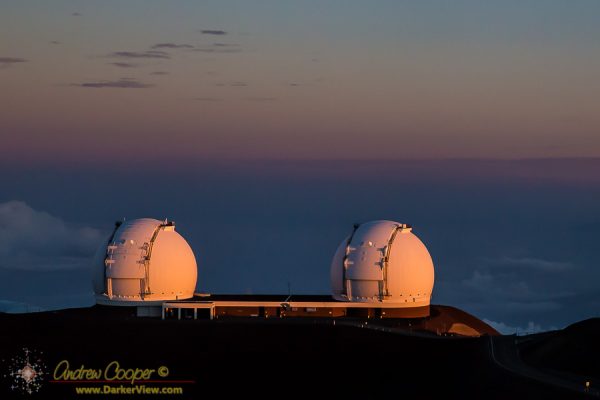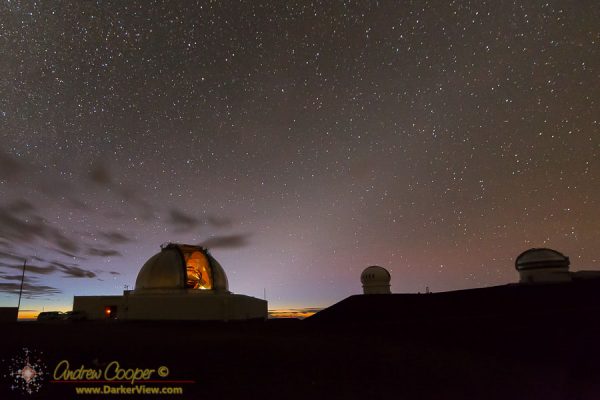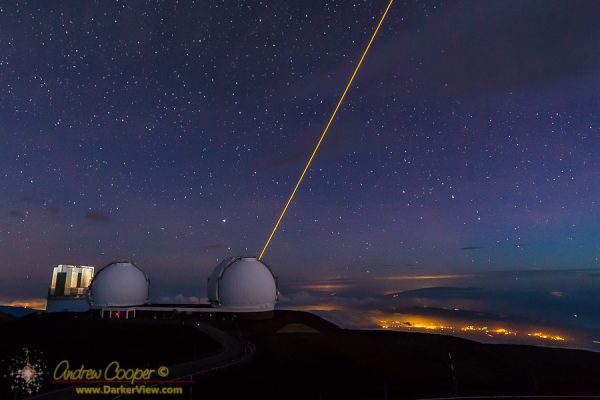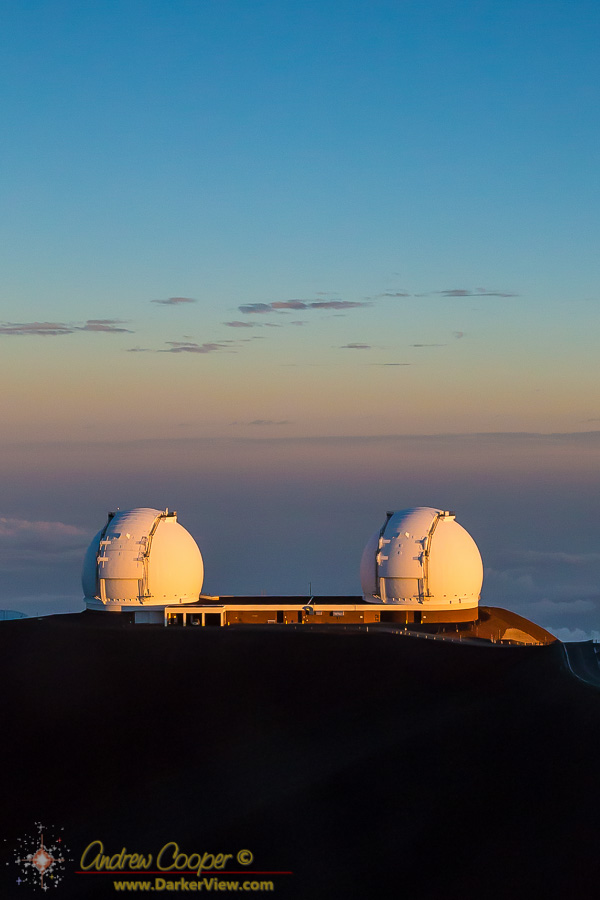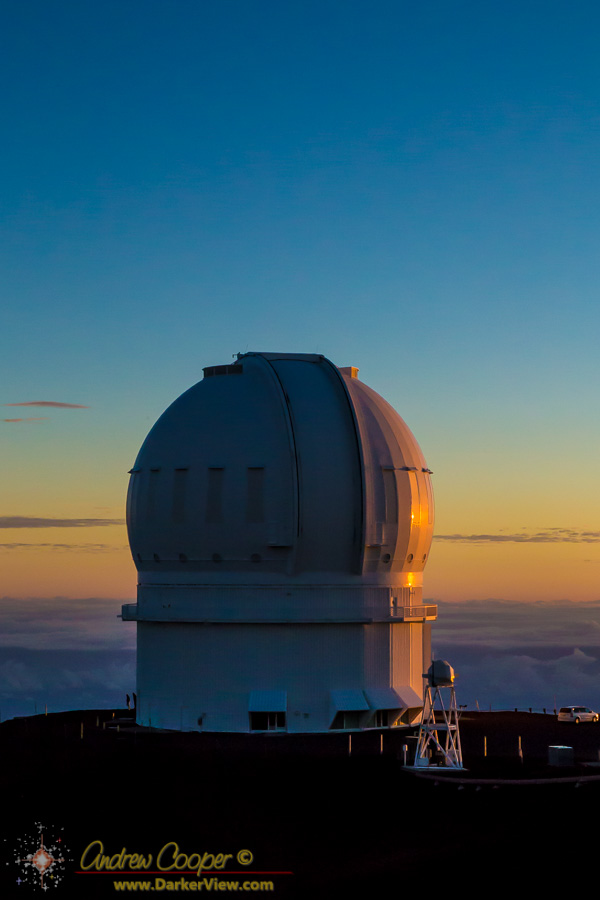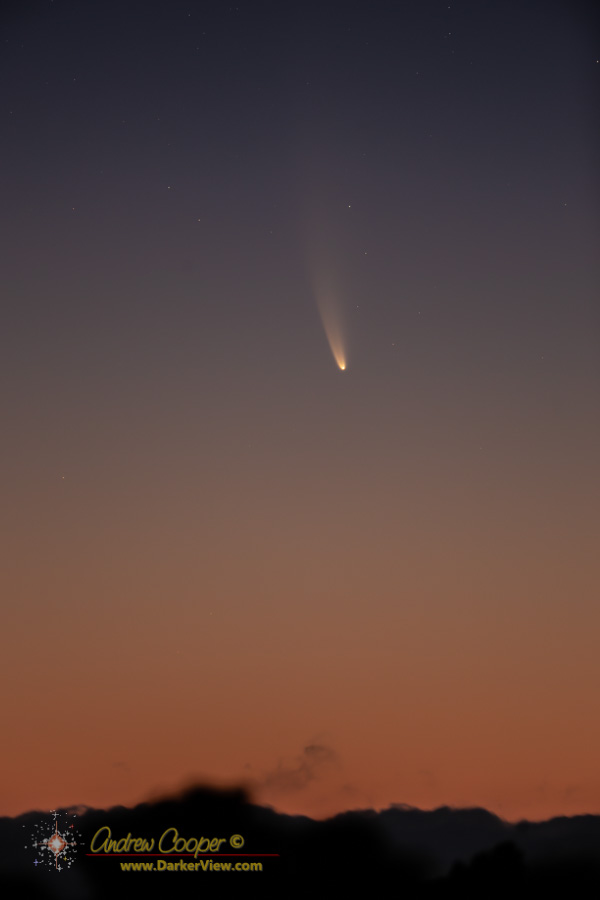
Tag: dawn
A Bright Comet in the Dawn
We have a bright comet in the dawn sky for a few days. Comet C/2020 F3 NEOWISE has brightened rapidly over the past few weeks, now about 1st magnitude it can just be seen against the glow of dawn.
I took along Hodepodge to serve as a tracking mount for the TV-76mm scope and a couple cameras to do some comet shooting. The Canon 6D would go with the small ‘scope, the EOS-M5 with a tripod for wide angle shots.
Driving up Waikoloa road I was troubled by a bank of clouds in the Waimea saddle, thus I elected to head for the Humuʻula saddle instead. I ended up in the lava fields along the Mauna Loa access road. The view was perfect, and I had just enough time to get the mount and camera setup as the comet rose.
Continue reading “A Bright Comet in the Dawn”
